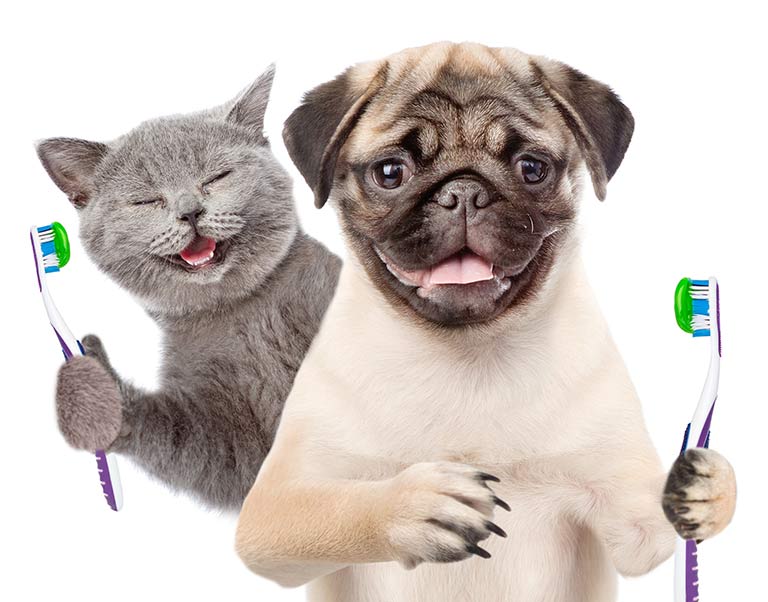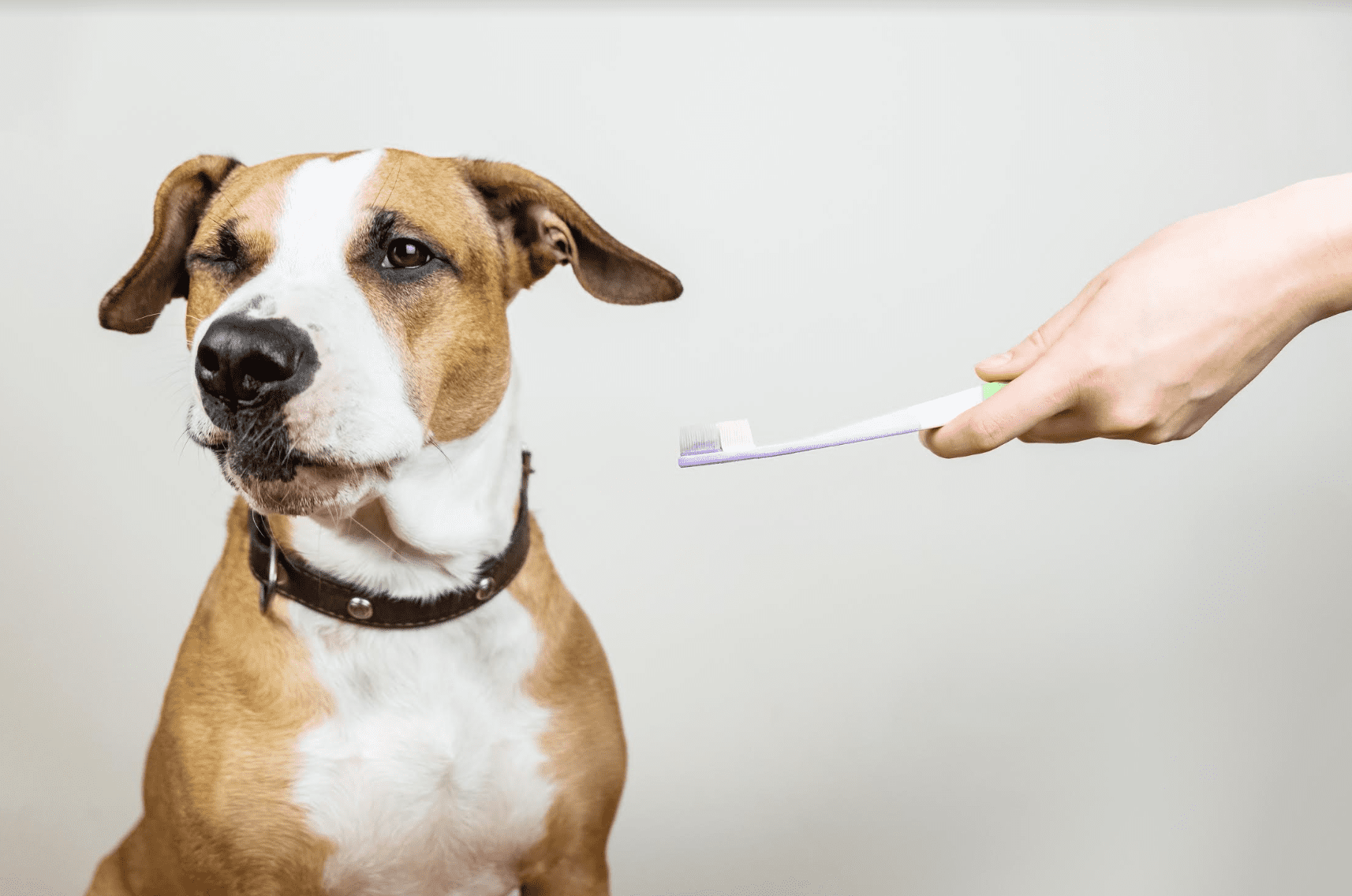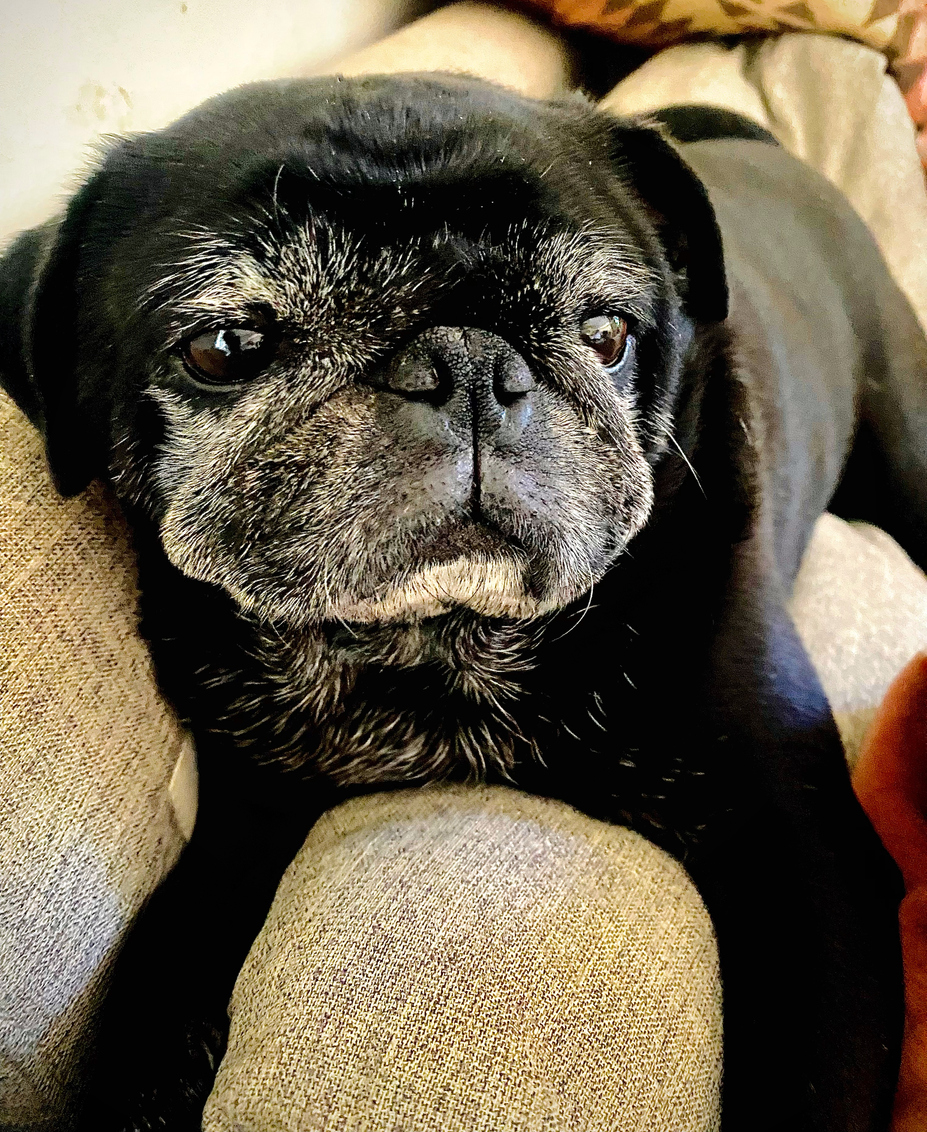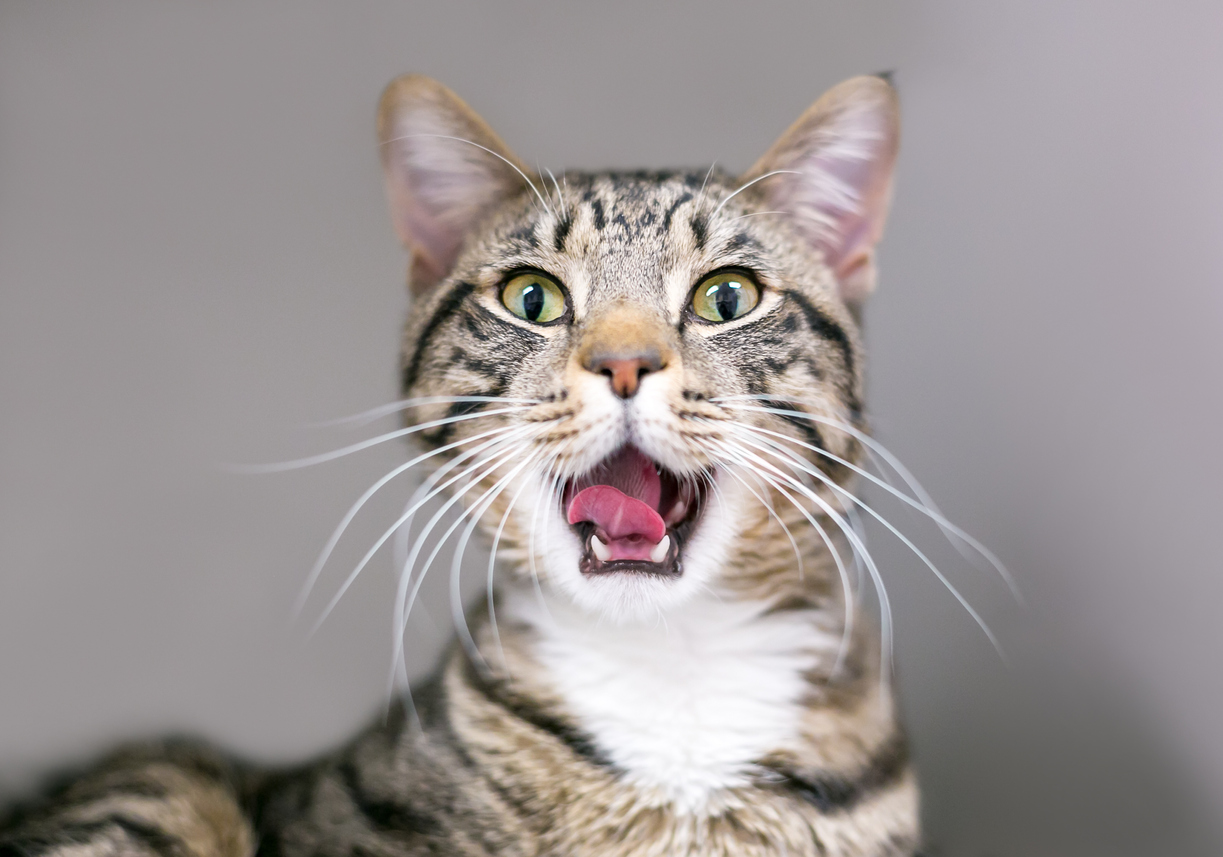Several Oral Pain Affecting Prehension & Mastication
Why do dogs experience dental pain?
According to the American Veterinary Dental Society, over 80% of dogs have signs of dental disease by the time they reach 3 years of age. While you may think of dental disease as being primarily a cosmetic issue, the truth is that dental disease can also be painful for pets. Inflammation of the gums (gingivitis) can be uncomfortable on its own, while some pets may have more serious issues such as affecting prehension and mastication.
What are the signs of oral pain in dogs?
Oral pain in dogs may take on a wide variety of appearances, depending on the degree of pain and the dog’s personality.
In some cases, an affected dog may not show any outward signs of pain. Dental pain may only be apparent on a veterinary exam, when your veterinarian or veterinary technician uses a dental probe to apply pressure around the root of the tooth.
In some cases, however, you may observe signs of dental pain at home. These signs may include:
- decreased interest in eating dry food
- decreased interest in hard treats
- chewing more slowly than usual
- dropping food from the mouth while chewing
- excessive drooling
- pawing at the mouth
- new or worsening resistance to having the face/mouth touched
If your dog is showing any of these signs, he may be experiencing dental pain. In addition to these signs, which clearly reflect pain, other signs of dental disease may also suggest the likelihood of dental pain. These signs may include bad breath, visibly loose teeth, or swelling of the muzzle.
What is the best treatment for dogs with oral pain?
The only effective treatment for dental pain is to address the dog’s underlying dental disease. While pain medication may help decrease pain levels for a short time, the pain will continue to recur until the underlying issue is addressed.
Your veterinarian will likely recommend a comprehensive oral health assessment and treatment, to be performed under general anesthesia. First, your veterinarian will perform a pre-anesthetic exam and laboratory evaluations (typically a complete blood cell count and serum biochemistry), in order to assess your dog’s overall health prior to anesthesia. Your dog will then be fully anesthetized to permit a complete oral evaluation and dental cleaning. The tartar will be scaled off your dog’s teeth, allowing the entire tooth to be visualized. Dental radiographs (X-ray) may also be performed, to allow evaluation of the tooth roots and issues that may occur under the gumline. Your veterinarian will also perform a thorough oral exam, carefully evaluating each of your dog’s teeth and the gum tissues.
Once your dog’s teeth have been thoroughly cleaned and evaluated, your veterinarian will devise a treatment plan for any dental issues that have been discovered. Dental treatments may include extractions of diseased teeth or advanced dental procedures such as a root canal. These procedures may be performed on the same day as the cleaning but, in advanced cases, your veterinarian may spread the dental procedures over multiple visits to minimize anesthesia time and stress to your dog. Additionally, your veterinarian may prescribe oral medications (antibiotics or pain medication) for your dog.
Can oral pain be prevented?
The best way to prevent dental pain is to ensure that your dog receives regular dental care. There are two components to dental care: home care and veterinary care.
The optimal home dental care is to brush your dog’s teeth daily. The goal of brushing is to remove plaque (the fuzzy accumulation of food particles and bacteria that develops on teeth) from teeth. Once plaque sits on the teeth for approximately 24 hours, it begins to harden into tartar, so it is important to brush your dog’s teeth daily. If your dog will not tolerate daily brushing, your veterinarian may be able to offer tips to make brushing more tolerable. Alternatively, your veterinarian can recommend oral rinses and/or medicated chews that may help promote your dog’s oral health.
Regular veterinary dental care is also important to your dog’s oral health. In general, most dogs should have a comprehensive oral health assessment and treatment (anesthetized dental cleaning) once yearly. Young dogs may be able to go a couple of years before their first dental cleaning, depending on their genetic predispositions and the effectiveness of your home care, while older, small-breed dogs may need dental care as often as every six months.

Why do cats experience oral pain?
According to the American Veterinary Dental Society, over 70% of cats have signs of dental disease by the time they reach 3 years of age. While you may think of dental disease as being primarily a cosmetic issue, the truth is that dental disease can also be painful for pets. Inflammation of the gums (gingivitis) can be uncomfortable on its own, while some pets may have more serious issues such as fractured teeth, tooth root abscesses, and oral tumors.
What are the signs of oral pain in cats?
Oral pain in cats may take on a wide variety of appearances, depending on the degree of pain and the cat’s personality.
In some cases, an affected cat may not show any outward signs of pain. Dental pain may only be apparent on a veterinary exam, when the veterinarian or veterinary technician uses a dental probe to apply pressure around the root of the tooth.
In some cases, however, you may observe signs of oral pain at home. These signs may include:
- decreased interest in eating dry food
- decreased interest in hard treats
- chewing more slowly than usual
- dropping food from the mouth while chewing
- excessive drooling
- pawing at the mouth
- new or worsening resistance to having the face/mouth touched
If your cat is showing any of these signs, she may be experiencing dental pain. In addition to these signs, which clearly reflect pain, other signs of dental disease may also suggest the likelihood of dental pain. These signs may include bad breath, visibly loose teeth, or swelling of the muzzle.

What is the best treatment for cats with dental pain?
The only effective treatment for dental pain is to address the cat’s underlying dental disease. While pain medication may help decrease pain levels for a short time, the pain will continue to recur until the underlying issue is addressed.
Your veterinarian will likely recommend a comprehensive oral health assessment and treatment, to be performed under general anesthesia. First, your veterinarian will perform a pre-anesthetic exam and laboratory evaluation (typically a complete blood cell count and serum biochemistry), in order to assess your cat’s overall health prior to anesthesia. Your cat will then be fully anesthetized to permit a complete oral evaluation and dental cleaning. The tartar will be scaled off your cat’s teeth, allowing the entire tooth to be visualized. Dental radiographs (X-rays) may also be performed, to allow evaluation of the tooth roots and issues that may occur under the gumline. Your veterinarian will also perform a thorough oral exam, carefully evaluating each of your cat’s teeth and the gum tissues.
Once your cat’s teeth have been thoroughly cleaned and evaluated, your veterinarian will devise a treatment plan for any dental issues that have been discovered. Dental treatments may include extractions of diseased teeth or advanced dental procedures such as a root canal. These procedures may be performed on the same day as the cleaning but, in advanced cases, your veterinarian may spread the dental procedures over multiple visits to minimize anesthesia time and stress to your cat. Additionally, your veterinarian may prescribe oral medications (antibiotics or pain medication) for your cat.
Can dental pain be prevented?
The best way to prevent dental pain is to ensure that your cat receives regular dental care. There are two components to dental care: home care and veterinary care.
The optimal home dental care is to brush your cat’s teeth daily. The goal of brushing is to remove plaque (the fuzzy accumulation of food particles and bacteria that develops on teeth) from teeth. Once plaque sits on the teeth for approximately 24 hours, it begins to harden into tartar, so it is important to brush your cat’s teeth daily. If your cat will not tolerate daily brushing, your veterinarian may be able to offer tips to make brushing more tolerable. Alternatively, your veterinarian can recommend oral rinses and/or medicated chews that may help promote your cat’s oral health.
Regular veterinary dental care is also important to your cat’s oral health. In general, most cats should have a comprehensive oral health assessment and treatment (anesthetized dental cleaning) once yearly. Young cats may be able to go a couple of years before their first dental cleaning, depending on their genetic predispositions and the effectiveness of your home care, while some older cats may need dental care as often as every six months.



